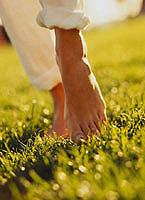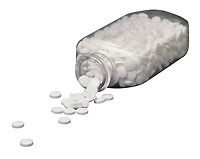What is the heel spur? Symptoms and diagnosis of the disease. Treatment of heal ship.
Content
What is the heel spur
Heel spur - This is a fairly common disease of the musculoskeletal system, which is manifested by pain in the heel area. In the modern world, these diseases suffer mainly women, about 80% of all cases. Three quarters of women are urban residents. This is connected with the wearing shoes on high heels (above 3 cm). It is mainly found in women 40 years and older.
 The causes of this disease can be different. Some researchers interpreted this disease as a result of longitudinal flatfoot, suffered infections, as a result of acute or chronic traumatization of the heal bone. The excessive mass of the patient can also be viewed as a causal factors for the development of heel spurs. However, practical work is not always possible with reliability to establish the cause of the disease.
The causes of this disease can be different. Some researchers interpreted this disease as a result of longitudinal flatfoot, suffered infections, as a result of acute or chronic traumatization of the heal bone. The excessive mass of the patient can also be viewed as a causal factors for the development of heel spurs. However, practical work is not always possible with reliability to establish the cause of the disease.
The heel spur is a bone protrusion in the form of a spike or a beak, which is energized from the plantar surface of the fidial bone. The base of the protrusion is merged with the heel hill, and the free edge is directed.
10% of the elderly people can radically occur heaving spurs. But at the same time they do not make any complaints. Consequently, the presence of anatomical spurs in itself does not mean disease. And, on the contrary, in many patients with a pronounced clinical picture, radiological signs may be absent.
The main and main symptom of heel spurs is the pain in the heel. In this case, the sensations of patients are compared with the way if they came on a needle or nail. The main cause of pain in the heel spur is chronic plantative fasci. This is a chronic inflammation of the plantar aponeurosis. The reason for such inflammation is constant traumatization of its acute heel spur.
When feeling the heel, you can find the most painful area. As a rule, in the field of the internal process of the heel boogue, t.E. closer to the inner edge of the heel bone.
The main method of diagnosing heel spurs is X-ray. In this case, the presence of bone protrusion in the region of the plantar surface of the heel bone.
How to treat the heel vehicle
Treatment of the patient with heel spur can be conservative and operational.
Conservative treatment Includes warm foot baths, compresses with various liquids, physiotherapy in different versions, anesthetic medicines. Sometimes x-ray therapy helps. Therapeutic measures are complemented by the appointment of orthopedic stelks or shoes, the legitimate tabs of soft materials. However, the experience of treating a large number of patients shows that all listed events rarely bring a cure or significant relief.
A special role is played by local application of corticosteroids. It is introduced into the region of the heel spur of a solution of hydrocortisone or kenaloga. These drugs contribute to the elimination of the inflammatory response, and therefore pain. However, their use is contraindicated in the heavy form of hypertension, decompensated diabetes, peptic ulcer of the stomach in the aggravation phase and any inflammatory processes on the skin.
The methods of physiotherapy treatment are also widely used: magnetotherapy, ultrasound, electrophoresis with various preparations (potassium iodide, novocaina), as well as laser therapy.
Operational removal of heel spurs It is rare. It can be shown in the complete inefficiency of conservative treatment, when all methods are used, including local hormone introduction. Operational treatment is that in the heel area over the heel, the cut of soft tissues is made, the heel spur is released and it is knocked down by bit. Operational treatment, as a rule, ends with full cure.









